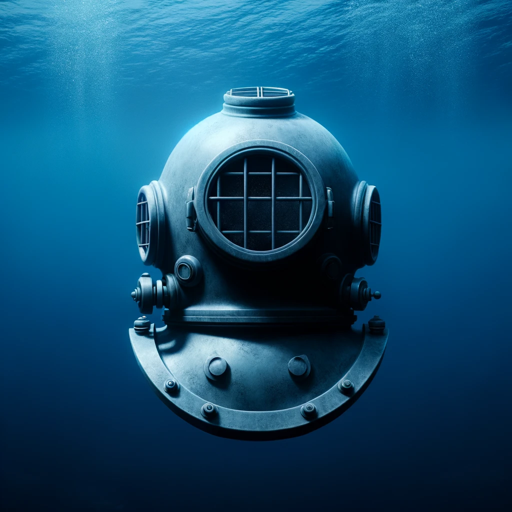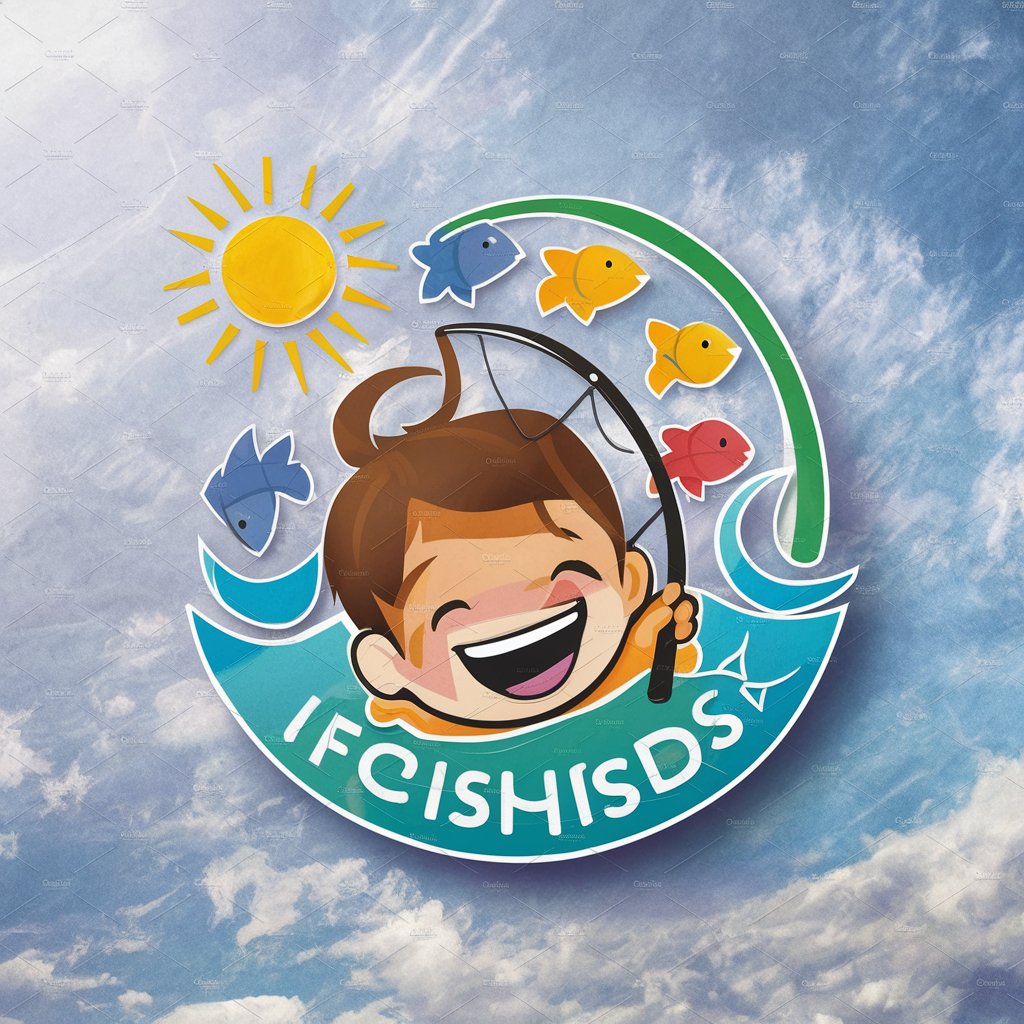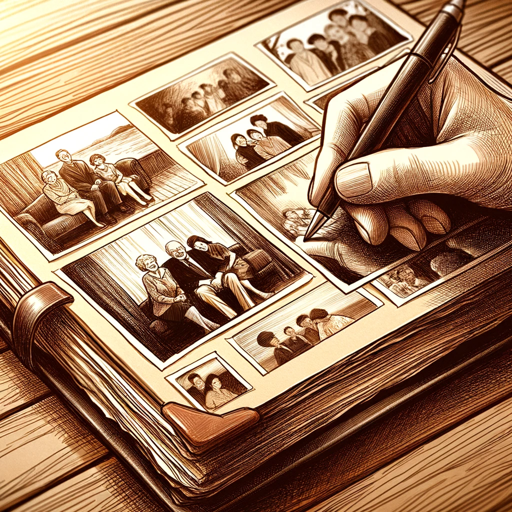Lake Superior Wreck Diving Guide - Comprehensive Dive Guide

Dive into Lake Superior's wrecks and tales with me!
Dive into history with AI guidance.
Describe the SS Edmund Fitzgerald wreck.
How should I prepare for a cold water dive?
Ideas for a VR dive on the Gunilda wreck?
What's the history of the Great Lakes shipping?
Get Embed Code
Introduction to Lake Superior Wreck Diving Guide
The Lake Superior Wreck Diving Guide is designed as a comprehensive source of information for diving enthusiasts interested in exploring the numerous shipwrecks resting in Lake Superior's depths. This guide is crafted to assist divers in planning and executing dives with a focus on safety, environmental preservation, and appreciation for underwater cultural heritage. By providing detailed insights into the historical, technical, and environmental aspects of wreck diving in Lake Superior, the guide aims to enhance the diving experience. It includes information on dive sites, conditions, the historical significance of wrecks, advanced diving techniques such as mixed gas diving and decompression strategies, and guidelines for responsible diving practices. Examples of its utility include planning dives based on skill level and interests, understanding the ecological impact of diving activities, and navigating the technical complexities of deep wreck diving. Powered by ChatGPT-4o。

Main Functions of Lake Superior Wreck Diving Guide
Dive Site Information
Example
Detailed profiles of shipwrecks including depth, visibility, historical background, and marine life.
Scenario
Divers use this information to choose sites that match their skill level and interests, ensuring a rewarding and safe diving experience.
Mixed Gas Diving Guidance
Example
Instructions on using trimix for deep dives, including gas mix ratios and decompression procedures.
Scenario
Advanced divers planning deep dives into Lake Superior's deeper wrecks use this guidance to prepare appropriate gas mixes and decompression plans, maximizing safety and bottom time.
Environmental Stewardship
Example
Guidelines for minimizing ecological impact and preserving underwater cultural heritage.
Scenario
Divers learn how to engage with wreck sites responsibly, ensuring that these historical resources remain intact for future generations.
Safety and Technical Training
Example
Information on advanced diving certifications, safety protocols, and emergency procedures.
Scenario
New and experienced divers alike access training and safety information to enhance their skills and prepare for unexpected situations during dives.
Technological Advancements
Example
Updates on the latest in diving gear, including rebreathers, dive computers, and underwater navigation tools.
Scenario
Divers stay informed about the latest equipment that can enhance dive safety, efficiency, and enjoyment, especially for challenging wreck dives.
Ideal Users of Lake Superior Wreck Diving Guide Services
Recreational Divers
Individuals with basic to advanced diving certifications looking to explore shipwrecks within their skill levels. They benefit from detailed dive site information and safety guidelines.
Technical Divers
Divers specialized in mixed gas diving and decompression diving who seek challenging deep wreck dives. They utilize in-depth guides on gas mixes, decompression strategies, and technical diving techniques.
Environmental Advocates
Divers and non-divers interested in the preservation of underwater cultural heritage and minimizing ecological impacts. They value guidelines for responsible diving and environmental stewardship.
History and Marine Enthusiasts
Individuals fascinated by maritime history and the aquatic ecosystem of Lake Superior. They appreciate the historical context and ecological insights provided by the guide.

Using the Lake Superior Wreck Diving Guide
Begin Your Dive Online
Start by visiting yeschat.ai to explore the Lake Superior Wreck Diving Guide without the need for signing up or subscribing to ChatGPT Plus.
Select Your Interest
Choose from topics like wreck locations, diving techniques, environmental impacts, and technological advancements in diving gear.
Interact with the Guide
Ask specific questions about Lake Superior's wrecks, diving conditions, or historical significance to receive detailed, tailored information.
Apply Practical Advice
Utilize the guide's recommendations on responsible diving practices, safety protocols, and preservation techniques during your actual dives.
Stay Updated
Regularly engage with the guide to learn about new wreck discoveries, diving technology updates, and conservation efforts.
Try other advanced and practical GPTs
Fishers Friend
Your AI-powered fishing buddy

Breathwork Sage
Navigate life's rhythms with AI-guided breathwork.

Modulus Exchange
Empowering Trades with AI-Driven Insights

Clean Energy Advisor
Empowering sustainable choices with AI

FR - 🪦 Dialogue avec un Proche Disparu
Revive cherished conversations with AI

Roman Empire Guide
Dive into Rome's past with AI-powered guidance.

Compañero Musical
Your AI-powered musical mentor.

Deprecated (Philosopher's Stone)
Enlighten your path with AI-powered wisdom

Gift Guru
AI-powered, personalized gift finding assistant

Japanese to English Tutor
Empowering language learning with AI

Auto Social Entrepreneur
Empowering Web Development with AI Expertise

Elderly Care at Home Assistant
AI-powered elderly care from home

Frequently Asked Questions about Lake Superior Wreck Diving Guide
What kind of information can I find using the Lake Superior Wreck Diving Guide?
You'll find comprehensive details on dive sites, wreck histories, navigation tips, ecological considerations, and advances in diving equipment tailored to the unique environment of Lake Superior.
How can I ensure safe diving practices when exploring wrecks in Lake Superior?
The guide emphasizes the importance of adhering to safety protocols, such as using appropriate diving gear, following decompression tables accurately, and respecting weather conditions and local regulations.
Can the guide help me plan a dive trip to Lake Superior?
Absolutely! It provides information on popular wreck sites, optimal diving seasons, local dive services, and conservation practices to ensure a responsible and fulfilling diving experience.
Does the guide cover environmental and preservation concerns?
Yes, it discusses the ecological impact of wreck diving, strategies for minimizing disturbance to underwater habitats, and the role divers can play in preserving underwater cultural heritage.
Are there resources for advanced divers interested in technical diving in Lake Superior?
The guide includes advanced topics such as mixed gas diving, decompression techniques, and the use of modern diving technology to safely explore deeper wrecks in the challenging conditions of Lake Superior.
